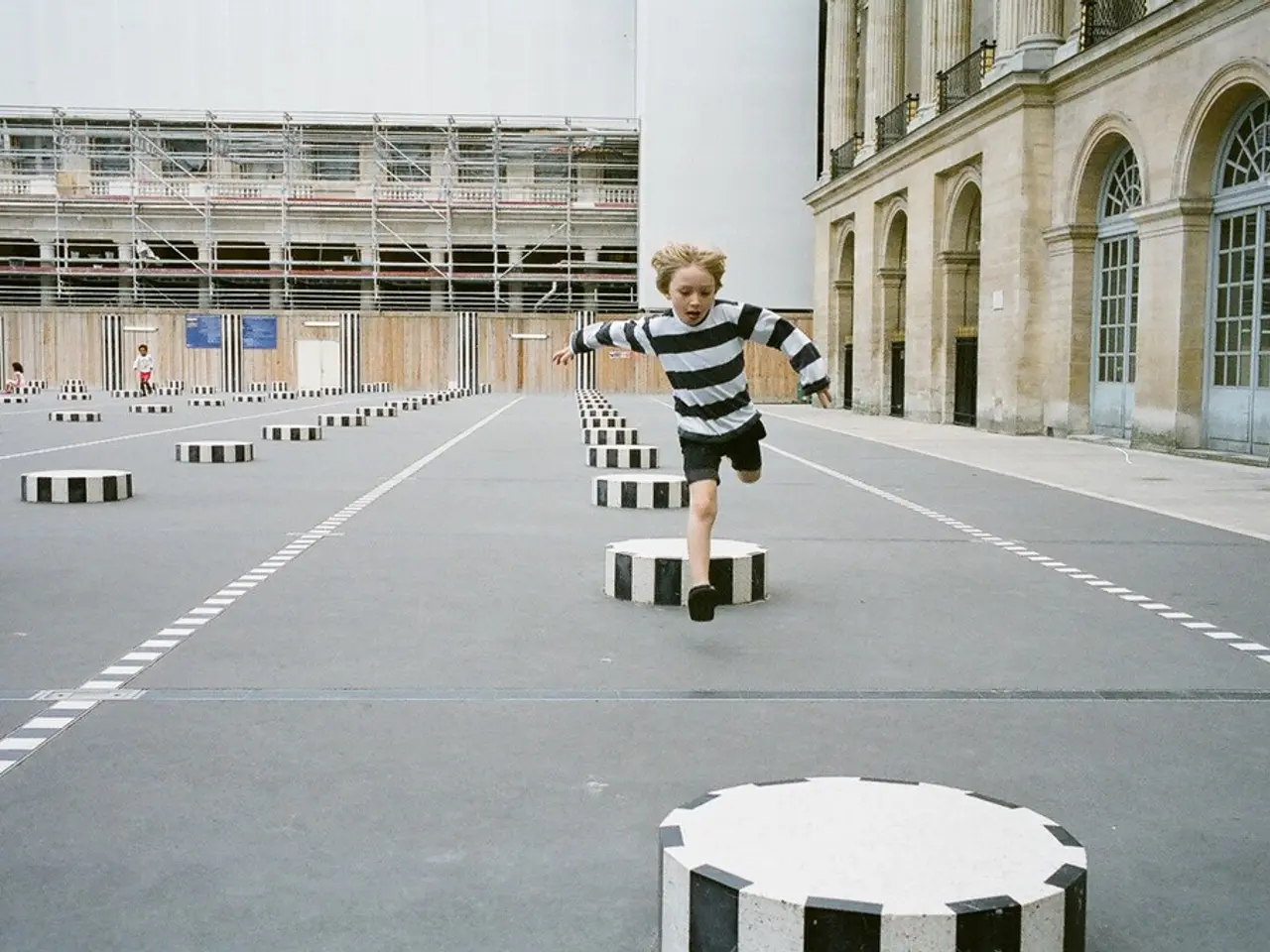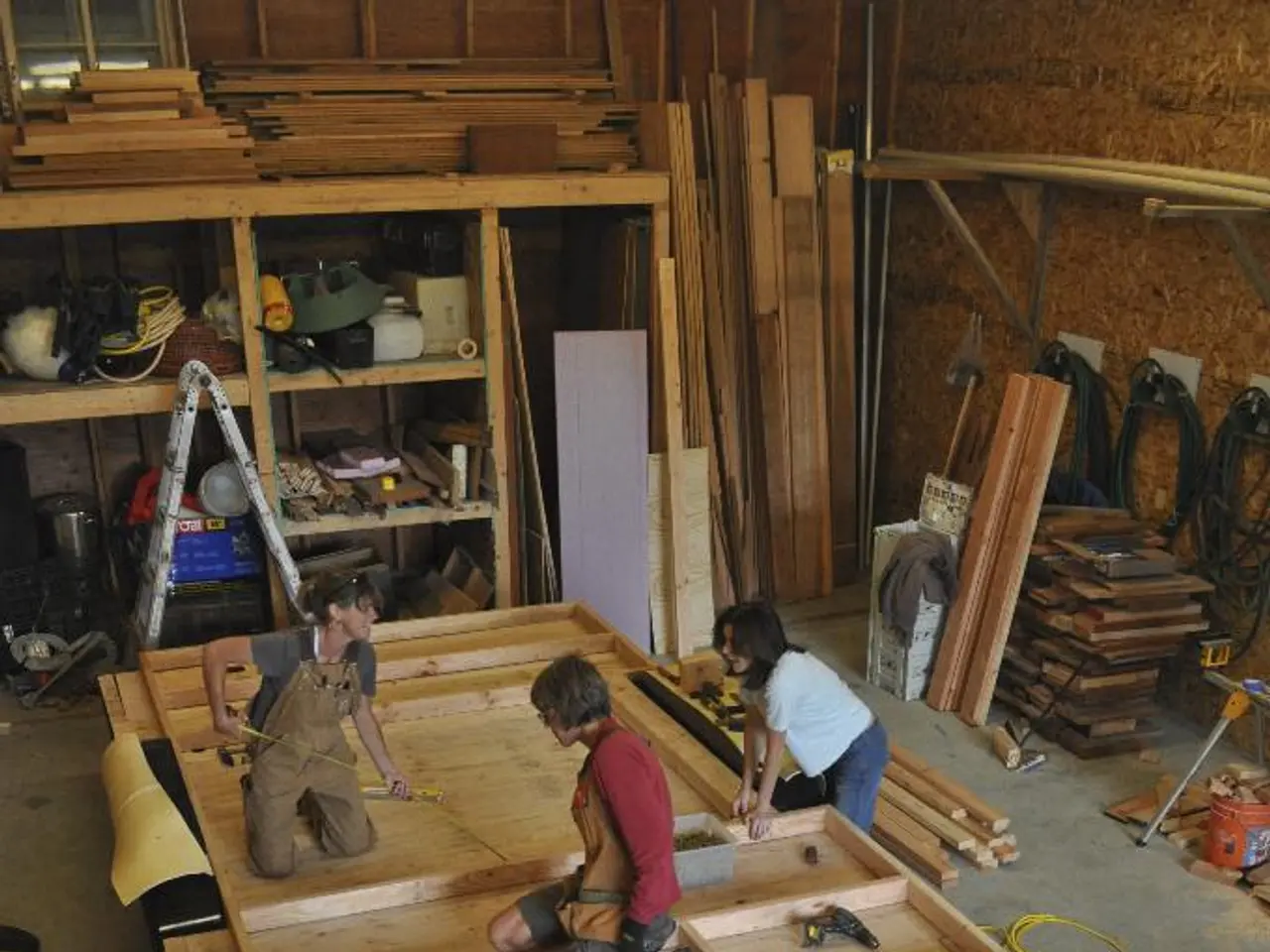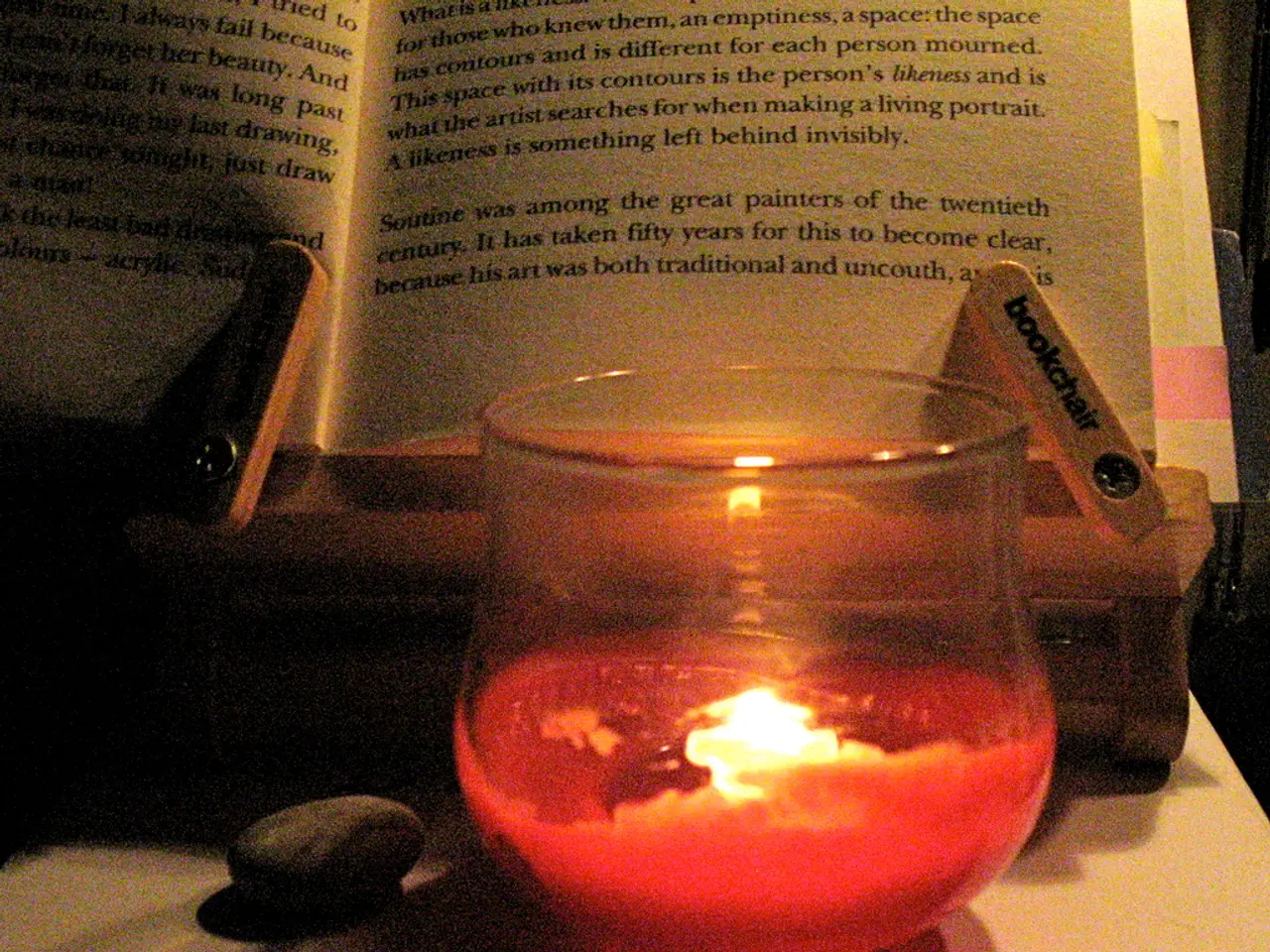Investigating Interactive Education Methods at Museo Dei Bambini Lecce
Let Loose the Child Within: Play and Its Role in Learning
At first glance, play may seem like a leisure activity, a break from the grind of learning. Yet, for the young ones, play ain't just fun – it's a learning jackpot. It's a playground where they test theories, solve puzzles, express feelings, and gather up the world's pieces. It's no sidestep from education, it's its very cradle.
The Museo dei Bambini turns play into lessons. Each exhibit sparks curiosity, discovery, and jubilation. And underlying every laugh or gasp of wonder, there's genuine brain growth.
The Lowdown on Play-Based Learning
Play-based learning takes play as its main stage for learning. It revolves around the idea that when children have the freedom to frolic, pretend, construct, and move, they develop essential skills – often without even noticing.
This type of learning is:
- Self-driven: governed by children's whims and preferences
- Focus on process: all about how children interact and think, not on grades or achievements
- Open-ended: without any "right" way to play or end
- Pure fun: because fun fuels memory and motivation
During their early years, play-based learning is gold. During this period, brain plasticity is at its peak, and learning through doing works wonders.
The Brainy Behind Learning Through Play
Play isn't all laughs and giggles – it's neuronally essential. Based on a study from the Harvard Center on the Developing Child, play fine-tunes executive function skills such as working memory, self-regulation, and flexible thinking. These are the mental "muscles" children use for planning, concentrating, and cracking problems.🔗 Harvard - The Science of Play
Another piece of research, courtesy of the LEGO Foundation, shows that play-based learning boosts literacy, numeracy, and emotional well-being – particularly when children are supported by caring adults who believe in the learning process.🔗 LEGO Foundation - Learning Through Play
In a groundbreaking 2018 report, the American Academy of Pediatrics even prescribed "play therapy," pointing to strong evidence that play catalyzes brain development and acts as a stress-buster in young'uns. 🔗 AAP - The Power of Play
Play-time at Museo dei Bambini
At the museum, play takes center stage, with exhibits designed to captivate not just the mind, but the body and heart.
Fun Zone – License to Cheer, Laugh, and Seize the Day
In this zone, children are given a green light to let loose, jumping, laughing, spinning, and pushing boundaries in a secure, supervised area. This type of physical, unstructured play is crucial for emotional regulation and swagger. It's what most children crave: the freedom to be livewire.
Goofy Faces – Emotional and Expressive Playground
Silly mirrors, spinning eyes, and movable face parts make up this corner, allowing children to create their own hilarious expressions. It isn't just about laughing – through this play, children explore facial expressions, emotions, and symmetry. For younger children especially, it's a stepping stone to understanding and managing feelings.
Captain's Wheel – Role-play and Perspective-Taking
Children take command of a massive ship's wheel and bark orders. They become captains, crew, sea creatures, or clouds, depending on their whims. Make-believe games like this refine children's grasp of roles, strengthen language skills, and nurture empathy – building blocks for social-emotional learning.
Domino Drop – Excitement and Cause-and-Effect
The children set up giant dominos and marvel as they give way in a riot of laughter. They experiment with spacing, weight, and height, often without realizing they're testing out Newton's laws. It's pure fun, but also a sneaky way to learn about force, balance, and chain reactions.
Pull & Lift – Brawn Meets Brain
Exhibits inviting children to pull ropes, lift weights, and tinker with levers have a magnetic pull. The physical aspect captivates their attention, while the fundamental principals sneak in undercover – mechanics, force, tension. Repeated attempts and trial-and-error build understanding and grit.
What Educators Observe
According to Dr. Elisa Conti, an early childhood educator and play advocate in Milan, "Children use play to rehearse life." Through play, they test hypotheses, solve conflicts, and build emotional strength. It's where they do their best thinking.** As museum educators, we often see children tackle challenges on their own, unprompted. Problem-solving, cooperation, persistence – all on display as children engage with these exhibits.
What the Research Says
A 2020 study in Nature Human Behaviour found that play serves as a "super booster" for cognitive flexibility and learning adaptability. Children involved in play-based learning scored better on tasks that required shifting gears and coming up with fresh ideas.🔗 Play and Cognitive Flexibility – Nature Human Behaviour
Additionally, studies show that play-based environments contribute to stronger oral language skills, as children describe their actions, engage in conversations, and tell stories.🔗 Play and Language – SAGE Journals
What Families Experience
Parents frequently comment on how thoroughly their children get engrossed in these playful exhibits. One parent said, "My son refused to leave the Pull & Lift station. He kept insisting 'One more try – I almost got it!' That persistence? I hardly see that with homework." Another shared, "The Captain's Wheel sparked an expansive imagination game that lasted hours at home. They were even playing sea-themed games days later."
When play is meaningful, it doesn't stop at the museum door. It reverberates in imagination, storytelling, and family adventures.
Why Play-Based Learning Is Golden
In a world that often pushes children toward academic milestones, play reminds us that magic and exploration should lay the groundwork. Through play, children lay down neural pathways, strengthen emotions, build social skills, and foster creativity – without losing their sense of wonder.
Play isn't a side-session from learning. It's the heart of it. And when adults respect it, safeguard it, and play along, the learning multiplies.
Support play-based learning at home by giving children time, space, and leeway to explore their ideas, even if they seem far-fetched or wacky. Ask open-ended questions like "What are you building?" or "What happens next?" – and let their imaginations run wild.
Want to Dig Deeper?
🔗 Harvard Center on the Developing Child - The Science of Play🔗 The LEGO Foundation - Playful Learning🔗 AAP - The Power of Play in Child Development🔗 Play and Cognitive Flexibility – Nature Human Behaviour🔗 Play and Language – SAGE Journals
Play-based learning at the Museo dei Bambini is structured around exploring emotions, physicality, creativity, and self-expression, all of which are essential elements in education and self-development and contribute to learning.
Each interactive exhibit in the museum invites 'bambini' to engage in play that not only cultivates their cognitive skills but also promotes social-emotional learning, language development, and uncovers hidden aspects of science, math, and art, fostering a love for learning that extends beyond the museum walls.




